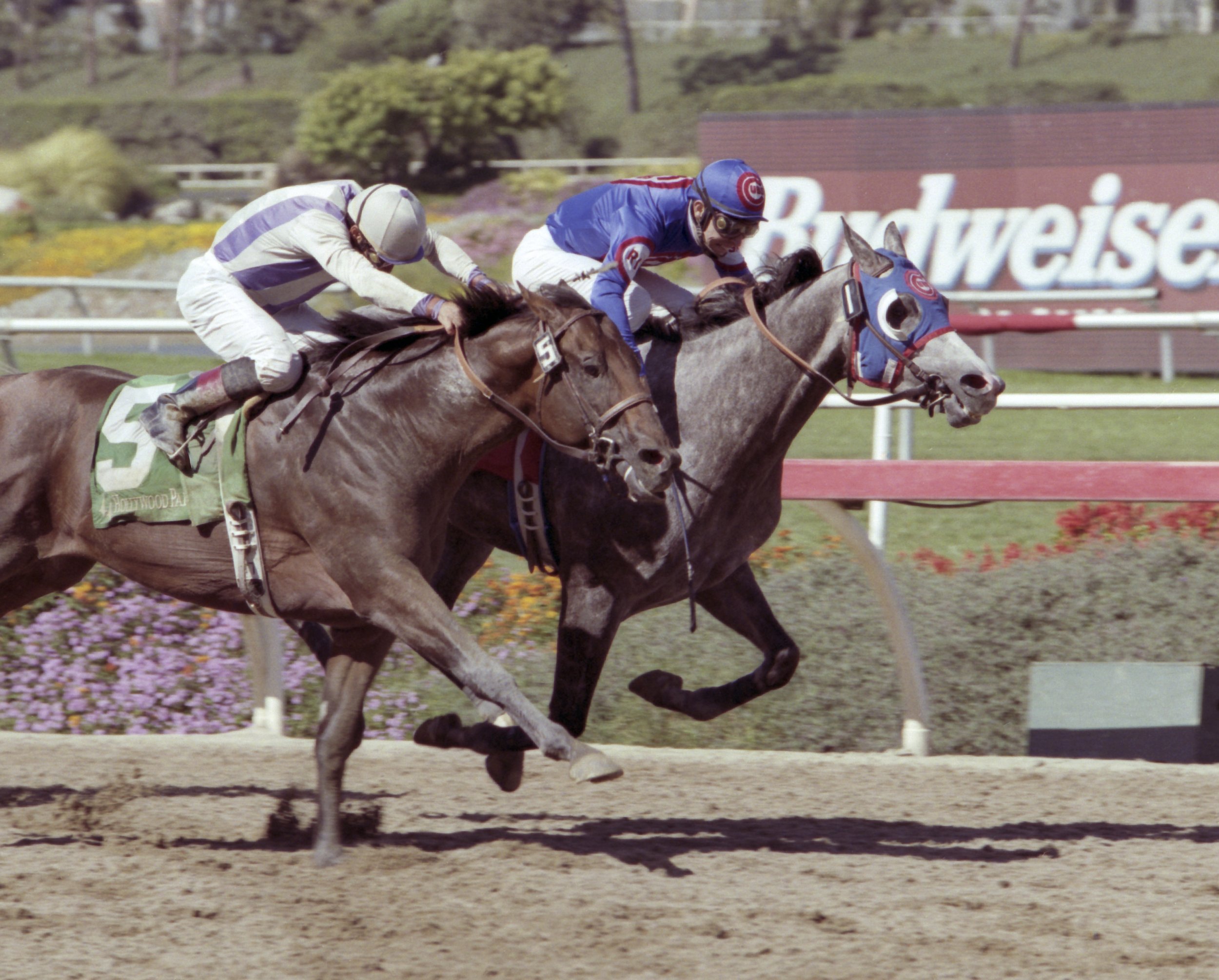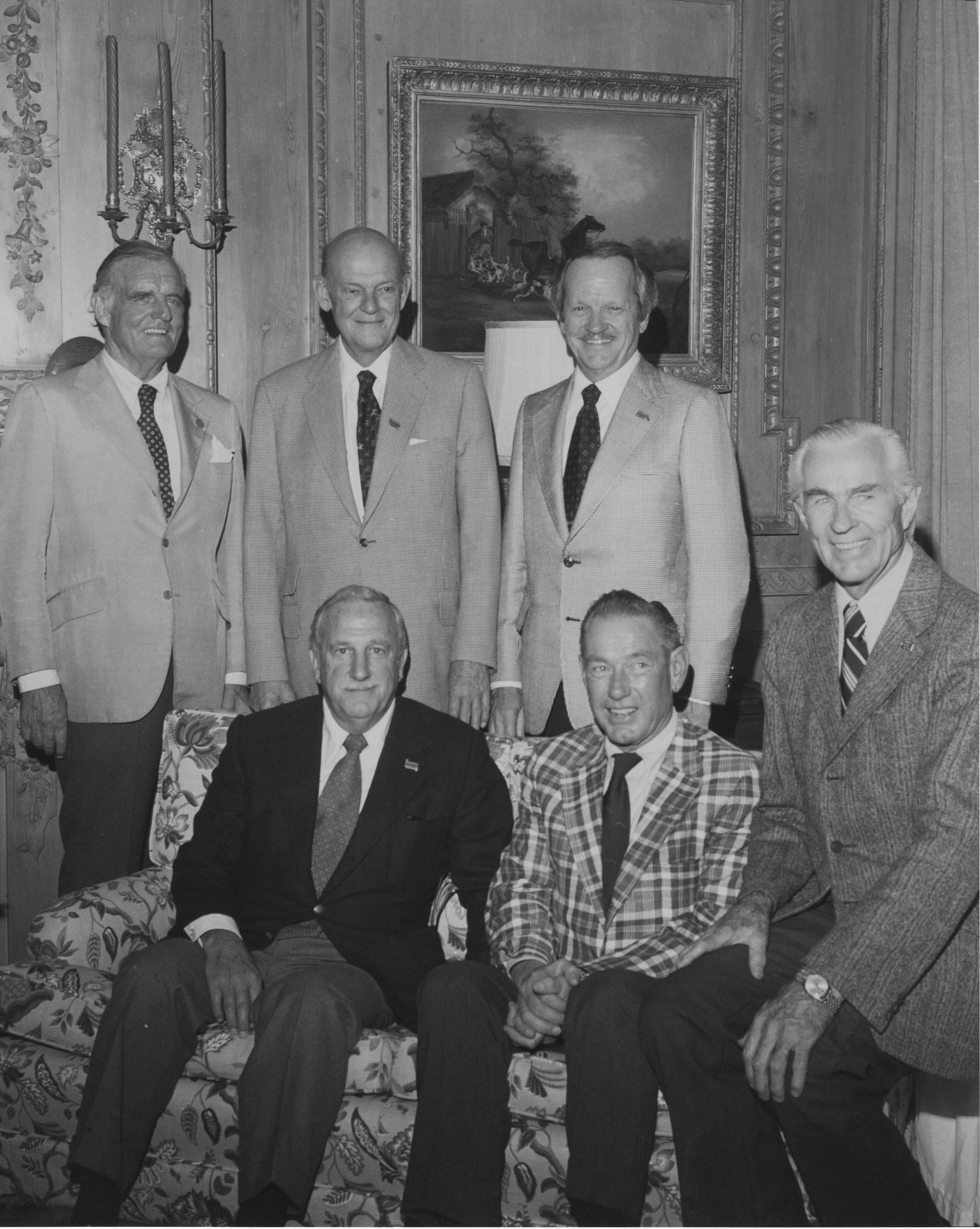Graded Stakes Winning Owners - Closing Remarks - John Harris (Harris Farms)
/Article by Bill Heller
The breadth of California Racing Hall of Famer John C. Harris’ accomplishments is so vast, it’s difficult to know where to begin. “He’s probably one of the most influential horsemen in California racing as an owner and breeder, and respected by both sectors,” Bill Nader, the CEO of the Thoroughbred Owners of California, said. “He’s just an amazing man. What an impact he has had.”
His impact was celebrated last August when he was honored at the Edwin J. Gregson Charity/fundraising dinner at the Inn at Rancho Santa Fe, just a few miles east of Del Mar. He has served five terms as the President of the California Thoroughbred Breeders Association and is a member of the Jockey Club, the California Horse Racing Board and the Breeders’ Cup Board of Directors.
His list of racing stars includes his home-bred Soviet Problem, the 1994 California-bred Horse of the Year who won 15 of her 20 career starts with three seconds, one of them by a head to Cherokee Run in the 1994 Breeders’ Cup Sprint at Churchill Downs. Harris was co-breeder and co-owner of the incredible filly with Don Valpredo, the co-founder of Country Sweet Produce in Bakersfield. Harris called Soviet Problem “the best one I’ve ever had.”
Harris’ stallions at Harris Farms have included Cee’s Tizzy, sire of two-time Breeders’ Cup Classic winner Tiznow. Harris Farms was also part of the success story of 2014 and 2016 Horse of the Year California Chrome. Both those superstars grew up on Harris Farm and began training there.
The Harris Farm story traces back to Harris’ father, Jack, and his decision to move his farm from Texas to California in 1916. Twenty-seven years later, they established Harris Farm in California’s Central Valley, near Coalinga, a diversified company.
Thoroughbreds are just part of Harris’ story. His Harris Ranch Beef Company produces nearly 200 million pounds of beef and is California’s largest fed cattle processor. Harris Ranch Beef has been in California’s supermarkets for decades.
The Harris Ranch Restaurant alongside Interstate 5 has been a popular rest-stop for families traveling from Los Angeles to San Francisco or the other direction It is one of three dine-in restaurants on the vast property of more than several thousand acres. Harris Ranch Restaurant serves as many as half a million customers each year and has won several culinary awards.
Harris Farm produces onions, garlic, almonds, pistachios, olives, citrus fruit and asparagus and includes vineyards for producing wine.
But horses hold a sacred place in Harris’ soul, and he has bred and raced champions for several decades.
The Harris Farm Horse Division is split into two distinct ranches, 450 acres in Coalinga, from the main ranch and the remaining 140 acres located in Sanger specializing in the development of young horses and long-term lay-ups.
How has he been able to succeed in so many endeavors simultaneously?
“I try to keep all the balls in the air and not screw up things in the process,” Harris said.
Those close to him know how remarkably well he’s accomplished that.
“We’re all amazed, too,” said Tom Wyrick, the Assistant Manager of the Harris Farm Horse Division. “He’s a very caring guy. He’s good to people.”
Harris went the extra mile naming his horses for his employees. The first was Big Jess, Harris’ first home-bred stakes winner. He won 14 of 69 career starts with 12 seconds, seven thirds and earnings of $152,312. One of Big Jess’ sons, Juan Barrera, was also named for an employee. In 45 lifetime starts, he posted 10 victories, six seconds and seven thirds, making $245,705.
Harris cares deeply about racing in California, all racing in the state.
On the California Horse Racing Board, Harris tried to ensure the future of California’s fair racing, trying to preserve historic venues such as Ferndale.
Harris received a Bachelor of Science Degree in animal science and agricultural business management from the University of California at Davis.
In 2008, he was inducted into the California Racing Hall of Fame.
Harris said he was in favor of a recent proposed rule to limit the number of mares a stallion serves to 140: “I think it’s a good idea, but it’s kind of academic in California. We rarely have stallions in California who breed over 140 mares. Some are over 100, but none over 140. One-hundred-forty is quite a few. We breed horses here to race. The declining mares, that’s the tip of the iceberg. The problem in California is a lot of people aren’t making a lot of money racing here, and their interest starts to wane.”
His interest never has.
And he’s not slowing down. In 2023, Harris Farm horses won 27 of 194 starts and earned $1,628,186, its highest total of the 2000’s.
At the Edwin J. Gregson Foundation Dinner last August, Foundation President Jenine Sahadi said, “We’re delighted to honor John, not only for the accomplishments of his Harris Farm Horse Division, one of the country’s leading racing stables and utmost influential owner/breeder operations, for which he has been inducted to the California Racing Hall of Fame. We also acknowledge his many years of distinguished service to the industry as a California Horse Racing Board Commissioner, board member of the Breeders’ Cup, Jockey Club and the California Thoroughbred Breeders Association.”
Bill Nader, who was at that dinner, said, “It was a great night.”
And it couldn’t have meant more to Harris: “Eddie was a really good friend.”























